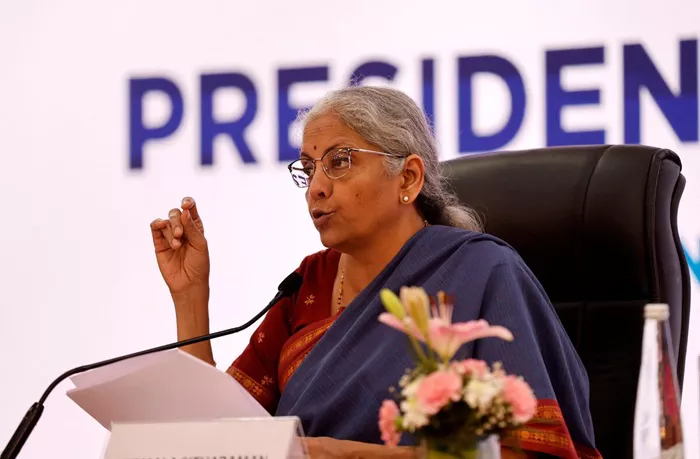India’s Finance Minister, Nirmala Sitharaman, has expressed confidence that the first phase of a trade agreement with the United States will be finalized by this autumn. In her address to the Indian diaspora in San Francisco on April 21, 2025, Sitharaman underscored the importance of the U.S.-India economic relationship, stating that the goal of the trade negotiations is much broader than just addressing reciprocal tariff issues.
The minister highlighted that the United States is India’s largest trading partner, and thus, it is crucial to formalize a comprehensive trade agreement with the country. Sitharaman emphasized that both nations stand to benefit from an agreement that promotes mutual trade and investment, which is essential for the continued growth of their economic ties.
Sitharaman’s remarks come as she embarks on a five-day trip to the United States, during which she will participate in the spring meetings of the International Monetary Fund (IMF) and the World Bank. These meetings provide an opportunity for global financial leaders to discuss and address international economic challenges. In addition, Sitharaman will attend a key meeting of the G20 Finance Ministers and Central Bank Governors, where discussions are expected to focus on global financial stability, economic growth, and other pressing financial issues.
The Finance Minister also pointed out that the ongoing trade discussions are not limited to tariff concerns but aim to address broader economic priorities that align with India’s long-term economic interests. The trade pact, once concluded, will likely have a far-reaching impact on various sectors, from technology and manufacturing to agriculture and services.
India’s engagement with the United States on trade matters has been steadily growing, and the negotiation of this deal is seen as a significant step in strengthening the strategic and economic partnership between the two nations. As the world’s largest democracy and one of its fastest-growing major economies, India is keen to enhance its global economic standing and its ties with key partners like the United States.
Sitharaman’s optimistic outlook on the trade agreement also reflects her confidence in the shared commitment of both nations to foster closer economic cooperation. She reiterated that a strong U.S.-India economic relationship would not only boost trade but also open new avenues for investment, technology sharing, and job creation on both sides.
This trade pact is expected to set the stage for more significant deals in the future, potentially covering sectors like clean energy, digital trade, and defense cooperation. The U.S. and India are also expected to discuss key areas of collaboration in innovation, research, and development, particularly in the technology sector.
In her speech, Sitharaman concluded by saying that the negotiations with the U.S. are essential not just for improving bilateral trade but for positioning both nations to play a larger role in shaping the global economy. The finalization of the trade agreement is anticipated to take place within the coming months, with a focus on ensuring that it is beneficial to both parties and aligns with their shared values and economic goals.
Related Topics:
WFIS 2025: Shaping the Future of Vietnam’s Financial Services
Canada’s Oil Industry Poised to Surpass U.S. Shale Amid Falling Prices

